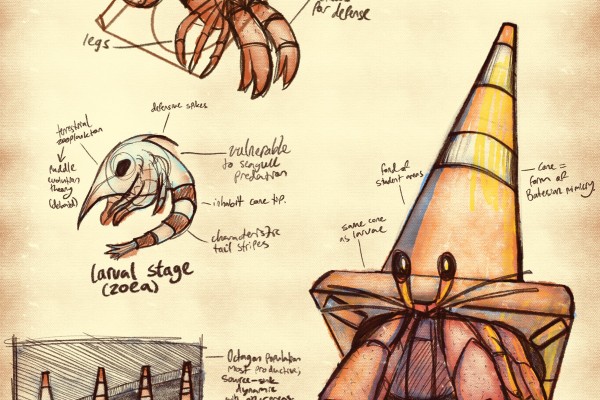Cryptozoology is part of a long line of various pseudosciences, promising to reveal hidden worlds that traditional sciences fail to properly comprehend. You may have heard of many ‘cryptids’, like mothman, bigfoot and the chupacabra. We at Critic Te Ārohi believe that Dunedin is host to all sorts of critters that the establishment (the zoology department, we suppose) don’t want you to know about; merely for being exceedingly rare, nonsensical, and in some cases totally made-up; and have taken it as our solemn duty to investigate, categorise, and fabricate an inexhaustive taxonomy of several of Dunedin’s most fantastic and fascinating cryptids.
Psychic Mould (Stachybotrys psychica)
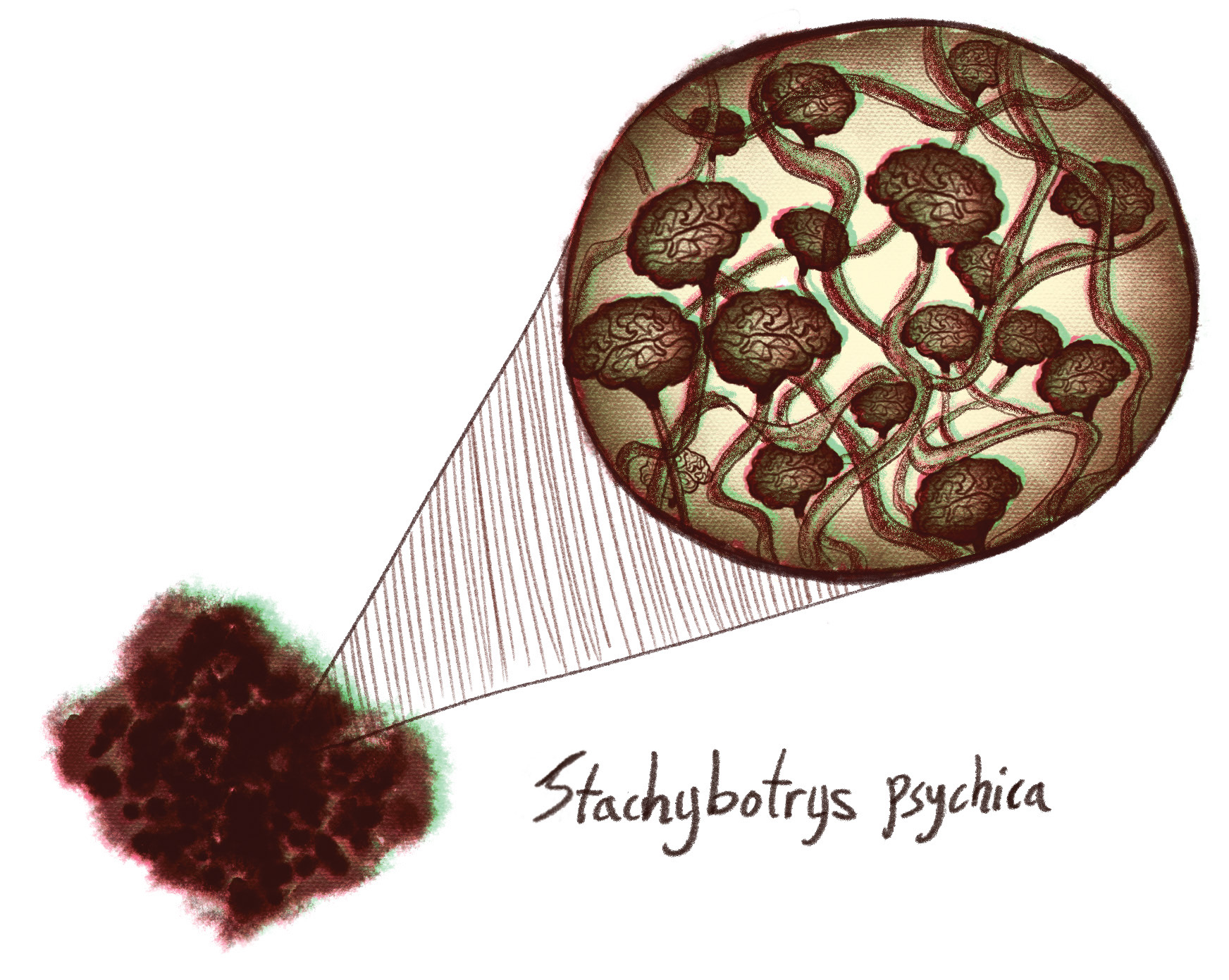
Dunedin flats offer a unique ecosystem for all manner of micro-organisms. One such organism that Critic has discovered is S. psychica or ‘psychic mould’. S. psychica appears very similar to the more common black mould (S. chartarum), with the added effects of inducing migraines, strange dreams and hearing whispers (colloquially referred to as ‘the voices’). The first culture is theorised to have originated from the grotty flats of particularly stressed students. Growing on a unique combination of warm moisture, spilled RTDs, and exam notes shoved down the side of a couch, the culture developed a kind of sentience of its own. Whether or not new theorised cases of psychic mold have spread from that initial colony or have evolved synchronously is the matter of much pseudoscientific debate.
Cone Hermit Crab (Paguroidea viaconcus)
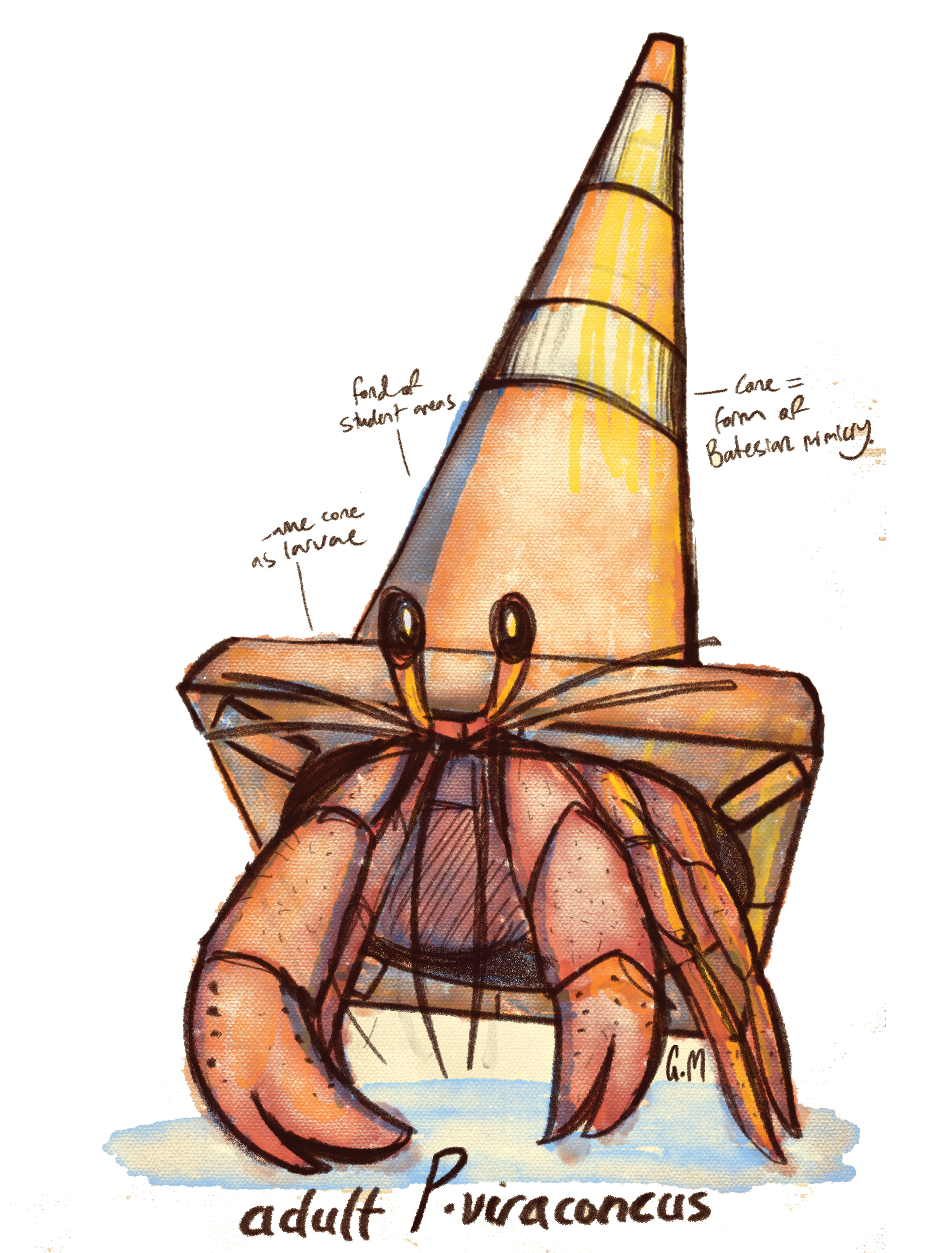
Ever wonder why traffic cones end up in such strange places? One proposed theory is giant hermit crabs! P. viaconcus, or the ‘cone hermit crab’, is a theorised nocturnal crab responsible for some amount of these shifting cones. The life-cycle of the crab is one of continuous migration. Crabs begin their lives in the nutrient-sparse spawning grounds on the road, where they spend much of their time curled up in the tips of the road cone, barely noticeable. Once the crab has reached sufficient size, they scuttle to more nutrient-rich hunting grounds – backyards and the insides of student flats are particular favourites – where they then settle and grow further. When the crab has reached full maturity, it’s suspected that they return to the roads to spawn, though any full migration back that way has not yet been successfully observed.
Flat Sprite (Spiritus insula)
![]()
The flat sprite is a member of the fairy genus and bears a lot of similarity to several other notable species. Like most other fairies, S. insula larvae sporulate in enclosed hollows of wood. But while most species do this in hollows in trees, the ‘flat sprite’ are instead born in closed wooden drawers. The larvae then feed on pieces of dust, crumbs, and at the later stages small pieces of cutlery (ever wonder why you’re always out of teaspoons?) that accumulate in the corners of the drawers. Once the sprite has eaten its fill, it will pupate into its adult form, which is capable of taking flight and leaving the drawers.
Adult flat sprites display a behaviour that is thought to have evolved mutually with ‘Scottish brownies’ (S. brùnaidh). Where brownies are known to do household chores in exchange for glasses of milk, S. insula are instead known to leave dirty dishes and unfinished glasses of drink out in random places about the flat. Unfortunately for us flatters, it appears that only the flat sprite has managed to migrate to Dunedin, leading to a destabilised ecosystem where clutter seemingly accumulates out of thin air, with no flatmate taking any responsibility for any of it.
Sock Gnome (Gnomus soccum)
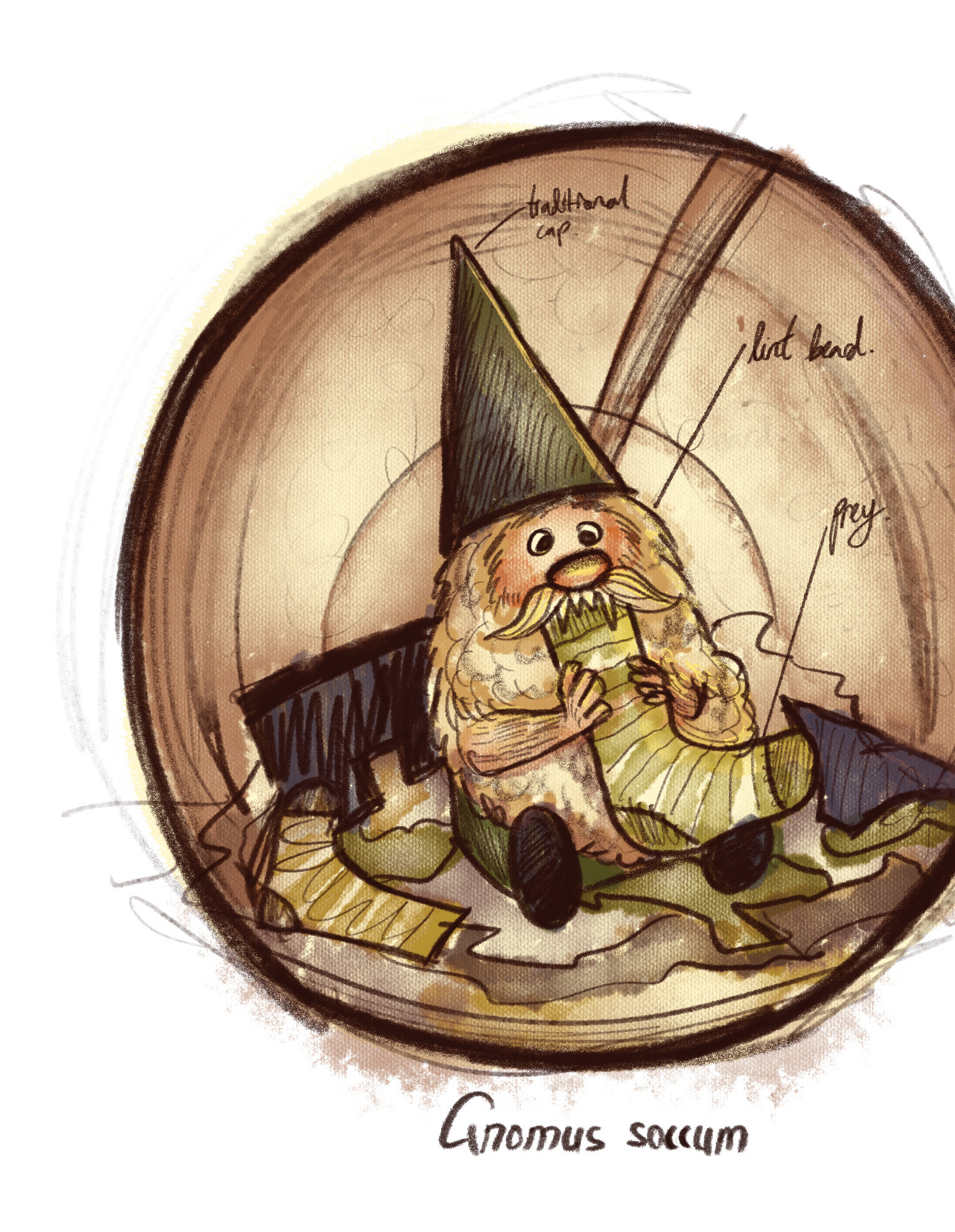
The ‘sock gnome’ is a species of gnome that lives in the back of washing machines and drawers. Identifiable by the bright red conical growth on its head, G. soccum is a vestivore, with a diet composed almost exclusively of socks and other small items of clothing. The gnome has specialised incisors, capable of fraying fabric into smaller strings which are then digested by specialised enzymes that attack polyester and cotton at the molecular level, causing holes, tears, and outright disappearances of clothing from the washing machine.
Leith Monster (Ignotus owheo)
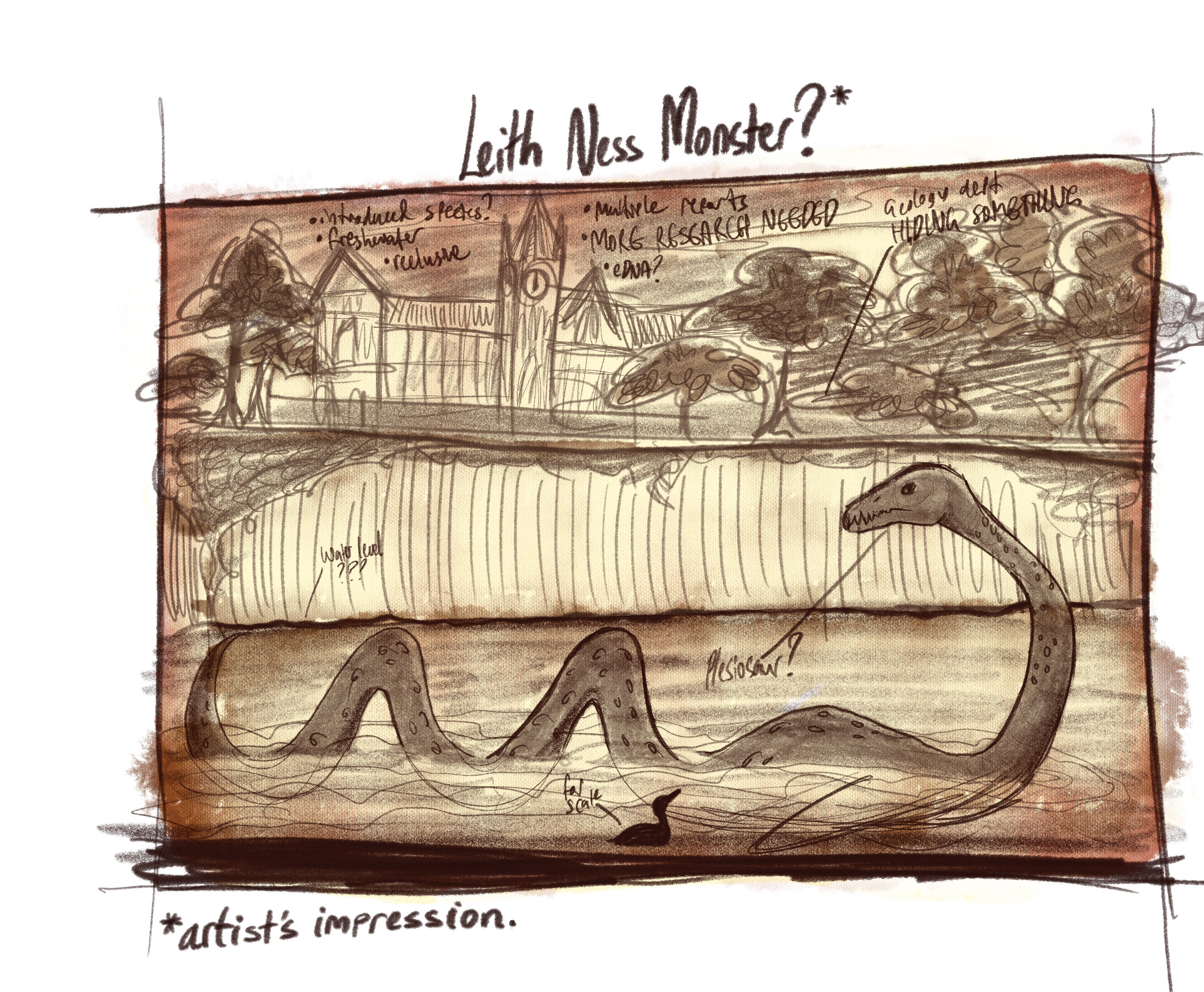
The idea of monsters in the water has captured minds around the world, from mighty taniwha and the Loch Ness Monster, to modern-day megalodons and bunyips. It would be totally amiss for us to rule out the possibility of some such creature inhabiting our own campus water-body, the Leith. Lured by the possibility of a totally new cryptid discovery, Critic Te Ārohi conducted a thorough(ish) investigation, staking out the Leith one cold night. Despite our best efforts, all that we found was a group of ducks – who refused to be interviewed – before we had to head back home to warm up. The main conclusion of this fruitless study is that if the proposed Leith Monster had any sense, it would have migrated to warmer waters for the winter.


